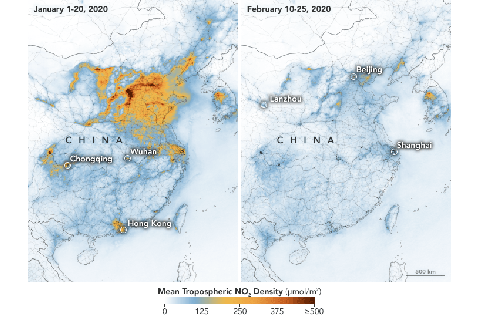The decline in carbon, an airier gas that quickly spreads into the atmosphere in about two weeks and makes up more than 80 percent of emissions, should be better understood in two to three weeks, said University of Miami atmospheric scientist Ben Kirtman.
“We’re not seeing a signal yet, but we will for sure,” he said. “There’s just a reduction in people driving around and in the U.S., that’s the single biggest source of carbon dioxide.”
The drop over such a short time is not expected to change the overall warming the planet is undergoing. For that to happen, fossil fuel consumption would need to decline by about 10 percent worldwide and be sustained for a year, according to the Scripps Institution of Oceanography, which monitors carbon emissions at the Mauna Loa Observatory in Hawaii along with the National Oceanic and Atmospheric Administration.
But the data scientists collect could help show how easy it may be to reduce the planet’s carbon, Kirtman said.
“Certainly working from home for four weeks or whatever is not great. But one day a week?” he said. “That’s huge.”
To measure the change, scientists will be looking at data from the network of stations at 15 to 20 locations in remote areas in the northern and southern hemispheres including Mauna Loa. What they discover could give them a better idea of just how quickly the planet responds when emissions suddenly drop. They’ll also be looking at carbon sinks, like mangroves, the peat under the Everglades’ rolling sawgrass marshes and tropical forests, for signs.
“You can measure those things, but turning that into a global carbon budget is not trivial,” Kirtman said.
Data could also more precisely indicate how much traffic contributes to global warming. The shutdowns, particularly in gridlocked cities like Miami, will likely effect emission hotspots that disproportionately contribute to the planet’s warming.
“If New York and Los Angeles draw down to very small emissions,” Kirtman said, “how long does it take before we start to see the implications around the globe?”
Scientists have already warned that to stop the planet from warming, carbon emissions have to be dramatically scaled back and net neutral in the next 15 to 20 years. To help achieve that, electric vehicles could realistically be swapped out for fossil fuel vehicles. And now, working from home could become another easy fix.
“People are realizing that they can be productive, fully productive, working from home,” he said. “When I’m in the office, there’s a large interrupt cycle. It’s hard for me to dig into my research for a long period of time. But at home, the interrupt cycle goes down quite a bit”





